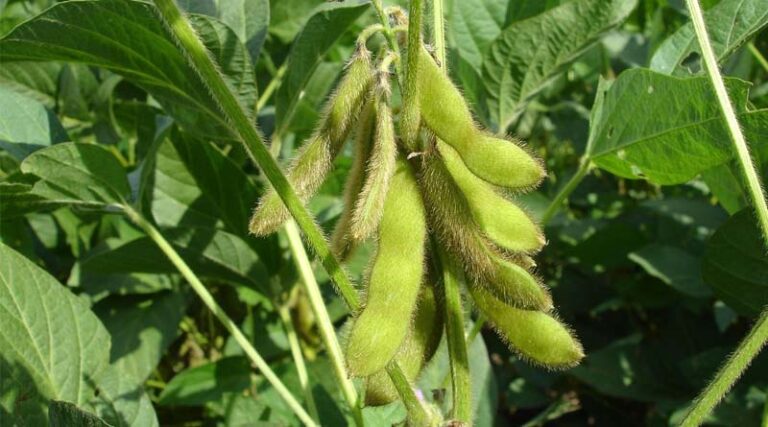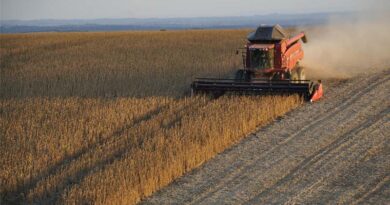
Sustainable Soybean Production in Brazil: How Low-Carbon Soybean Farming Works
Interview: Roberta Carnevalli, Head of R&D at Embrapa‘s Soybean Unit, graduated in agricultural engineering, master’s and doctorate from the University of São Paulo, with a post-doctorate at Massey University.
28 August 2025, São Paulo: Brazil, one of the world’s leading soybean producers, is advancing efforts to align agricultural productivity with sustainability goals. At the forefront of this work is Roberta Carnevalli, head of R&D at Embrapa’s Soybean Unit, who has dedicated her career to understanding and promoting “low carbon” soybean production. With an academic background that spans agricultural engineering at the University of São Paulo to a post-doctorate at Massey University, Carnevalli explains how soybean systems can be managed to reduce greenhouse gas emissions, enhance carbon sequestration, and deliver long-term benefits for both farmers and the environment.

What is “low carbon” soybean production?
Roberta Carnevalli – It is when soybean farming is done with the lowest greenhouse gas emissions in their production balance, when carbon sequestration by the production system and all emissions from the inputs used and the process are taken into account.
How do plants sequester carbon from the atmosphere?
Roberta Carnevalli – Every green plant captures carbon dioxide from the atmosphere during the day and transforms this gas into sugars, which makes the plant grow and produce. When we think about carbon sequestration, it is not only the capture of this gas that is important, but also its deposition and retention in the soil or wood. As plants grow, they form roots and aerial parts, and when they die, they form organic matter, which is deposited in the soil, surface and subsurface.
All organic matter in contact with microorganisms and oxygen degrades, and thus the carbon dioxide returns to the atmosphere.
The less organic matter is disturbed in the soil, the greater the preservation of immobilized carbon, characterizing effective carbon sequestration. Of the entire mass of crop residue, only part becomes organic matter, and only this preserved part is considered effectively sequestered.
How to measure carbon sequestration and emissions from crops?
Roberta Carnevalli – Science has methods for measuring greenhouse gas emissions from crops, but the process is expensive and requires a lot of technical knowledge. To define emissions from a commercial crop, for example, emission factors are used for each input used in the production process.
For sequestration, the evolution of carbon stocks in the soil is considered, through analyses or improved mathematical models. For greater accuracy in these calculations, it is necessary to use calculators that consider the emission factors most appropriate to the reality of Brazilian production and good quality primary data provided by producers.
Why are emissions in Brazil so related to agriculture?
Roberta Carnevalli – This is a controversial and complex issue. When accounting for a country’s emissions, sources such as energy, agriculture, land use change, industry and others are considered. Brazil has a very clean energy matrix, as we generate energy from hydroelectric plants and our fleet uses a substantial amount of ethanol. Therefore, in Brazilian accounting, what stands out most is not the emissions from energy, as in most countries that use oil and coal.
Proportionally, what stands out in Brazil are emissions from changes in land use and agriculture (crops and livestock). However, even though the country supplies ¾ of its agricultural production to feed the world, it emits only 5% of the planet’s total emissions. Brazil has a bad image when it comes to deforestation, even though it produces food in only 30% of its territory and conserves 66%, something no other country does.
Brazil can more than double its grain production simply by moving into underutilized pasture areas. Of the 30% of open land in Brazil, only 8% is used for grain production. The remaining 22% can be intensified to increase national production without any movement into forests.
What practices are recommended for “low carbon” soybean production?
Roberta Carnevalli – Embrapa’s Low Carbon Soy Program is developing a certification protocol for soybeans produced in production systems with low greenhouse gas emissions and high carbon sequestration, relative to typical regional systems.
The Low Carbon Soy certification is based on Good Agricultural Practices that promote both carbon sequestration and the reduction of greenhouse gas emissions. Recommended practices include the No-Till System, respecting the principles of minimal tillage, diversification, and crop rotation. Other points include: good soybean co-inoculation practices, removing all chemical nitrogen from the crop; optimized soil fertility management; integrated pest, disease, and weed management; compliance with climate risk zoning; use of bioinputs; etc.
What are the benefits for soybean farmers?
Roberta Carnevalli – The first benefit to the producer is in the production itself. Systems that are managed using good practices are more productive, economical and resilient. This resilience is essential to withstand the climate changes that have already been impacting crops in Brazil, especially in recent years (droughts, dry spells, heavy rains, heat waves). More resilient systems tolerate climate variations with less impact on productivity and the producer’s pocketbook.
A farmer whose production is certified and has emissions reports will have a different value in the market, in addition to lower interest rates on financing and more attractive premiums on agricultural insurance. The Low Carbon Soy seal will come into effect from mid-2026, but producers who intend to be recognized as low carbon can adopt and improve their practices now, so that when the seal is on the market, the effects of good practices can already be detected in assessments and analyses.
It is important to be aware that being a low-carbon producer means always using good practices, and not sporadically. Many producers in Brazil are already low-carbon and will be able to be certified when the seal is released to the market.
Source: AgriBrasilis
Also Read: Possible Decline in Wheat Production in India, Says Agriculture Minister
📢 If You’re in Agriculture, Make Sure the Right People Hear Your Story.
From product launches to strategic announcements, Global Agriculture offers unmatched visibility across international agri-business markets. Connect with us at pr@global-agriculture.com to explore editorial and advertising opportunities that reach the right audience, worldwide.






